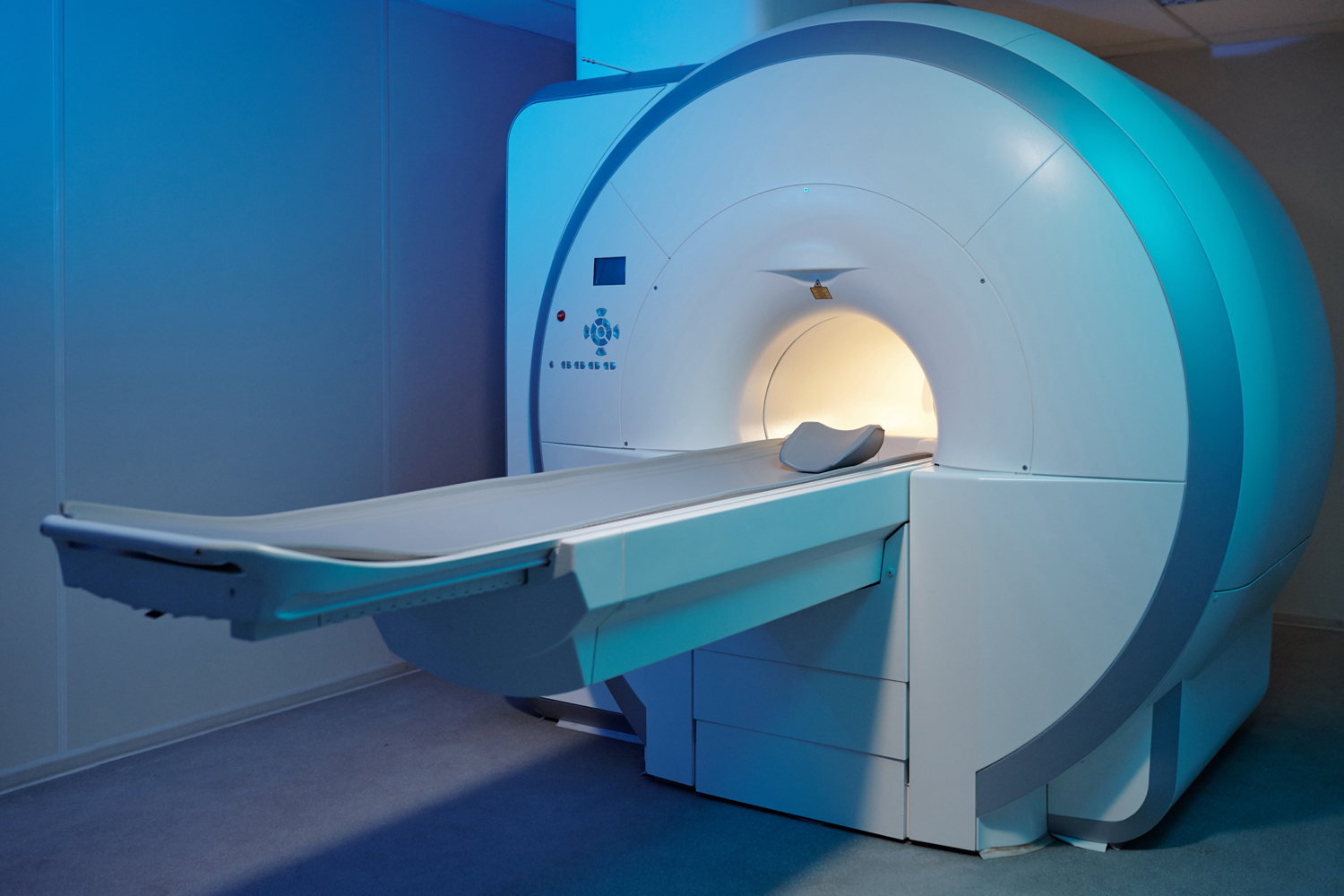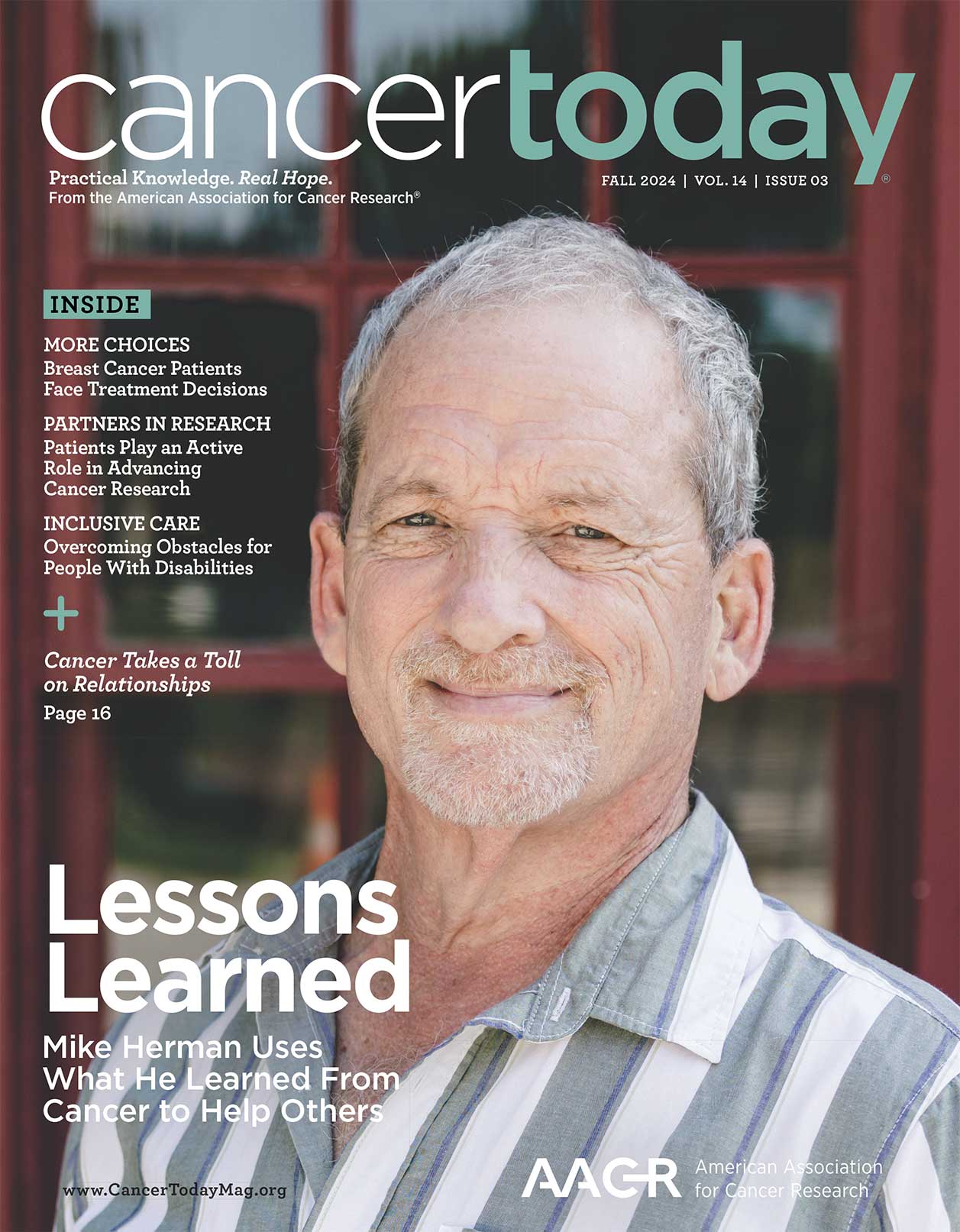Every week, the editors of Cancer Today magazine bring you the top news for cancer patients from around the internet. Stay up to date with the latest in cancer research and care by subscribing to our e-newsletter.
MRI Reduces Overdiagnosis From Prostate Cancer Screening
Screening for prostate cancer using a prostate-specific antigen (PSA) test has helped many people get treatment before cancer has spread and become uncurable, but it is also associated with finding indolent cancers—cases that may never spread or affect a person’s health. A recent study in the New England Journal of Medicine tested whether adding an MRI to identify cases where there is a visible lesion and directing the biopsy, if there is one, could help limit the number of men receiving unnecessary procedures or being treated for indolent cancers. The study, published Sept. 25, assigned men with elevated PSA results to either a standard biopsy plus additional targeted testing or to MRI-guided care. The former group all received a standard biopsy, where samples are taken from multiple sites around the prostate, as well as an MRI and, if the scan detected a possible lesion, an additional biopsy guided by those results. The latter group received an MRI first and only received a biopsy if the scan found a lesion. Using MRI to guide biopsy decisions led to a 59% decline in biopsy referrals and a 57% reduction in the detection of clinically insignificant prostate cancer. After four years of follow-up, there was no increase in advanced cancers. Jonas Hugosson, a study author and urologist at the University of Gothenburg in Sweden said the benefits of adding MRI may convince experts who have been concerned about unnecessary testing and treatment driven by PSA results to embrace prostate cancer screening. “In my opinion, this is the last piece of the puzzle to have real evidence that the benefits of prostate screening exceed the harms on a population level,” Hugosson said in an article on STAT. “This paper is the message to health care authorities around the world to look over recommendations for men.” Despite enthusiasm for the approach, STAT reported that there may not be capacity in the U.S. health system to scan all men who have a high PSA, which may limit how widely this approach is added to practice.
Smoking During Breast Cancer Radiotherapy Heightens Risk of Second Cancer
Like many cancer treatments, radiation therapy in breast cancer comes with the risk of developing a second cancer. A review of research in the United Kingdom published in the September issue of Clinical Oncology found that while the 30-year risk of dying from radiation-related lung cancer was very small for most cancer patients—less than half of a percent—people who smoked regularly during the course of radiation treatment faced a more substantial risk, between 2% and 6%, depending on the extent of the radiation therapy. Carolyn Taylor, an oncology professor at the University of Oxford and author of the study, said in an article in the Guardian that radiation is effective at treating cancer and reducing the risk that it will come back, but in targeting the breast, surrounding tissue, including the lungs, gets some exposure to radiation. This leads to a small long-term risk that a secondary cancer can develop. The review noted that the risk for people who quit smoking before treatment is likely to be much closer to the risk of people who have never smoked than it would be to those who still smoke regularly. “Continuing to smoke, and this is true for any cancer treated with radiotherapy, not just breast cancer, makes the treatment itself more unpleasant and less effective, with an increased risk of a subsequent recurrence of cancer,” Deborah Arnott, the chief executive of the UK charity Action on Smoking and Health, told the Guardian.
Using 3D Mammograms Leads to Fewer Callbacks and More Cancers Detected
The use of digital breast tomosynthesis (DBT), which produces 3D images to screen for breast cancer, led to fewer women being called back for additional scanning and to finding more cases of cancer when compared with traditional mammography, according to a study published Sept. 17 in Radiology. The research looked at nearly 273,000 breast cancer screenings at Yale New Haven Health in Connecticut, including more than 237,000 DBT scans, to compare the performance of two common screening tools. The use of 3D mammography with DBT was associated with fewer false alarms that required additional scans, according to an article on NPR. Women were recalled for additional scanning in 7.6% of DBT scans but 10.6% of 2D mammograms. DBT was found to detect more cancer cases overall and a lower proportion of those cases were advanced cancer, suggesting DBT detects cancers at an earlier stage. Liane Philpotts, the lead author on the study and a radiologist at Yale, told NPR that women with dense breasts, which can make it difficult to find breast cancer amid dense tissue in 2D mammograms, were likely to derive the most benefit from DBT and the lower rate of false alarms. She said she would be encouraging women to request 3D imaging whenever possible. “We have the benefit of a lower recall rate, or fewer false positives. We have increased cancer detection, and we have a lower rate of advanced cancers,” Philpotts told NPR. “So it’s truly a game changer.”
EGFR-targeted Therapy Extended to Locally Advanced Lung Cancer
The Food and Drug Administration (FDA) announced Sept. 25 the approval of Tagrisso (osimertinib) to treat locally advanced stage III non-small cell lung cancer that can’t be removed with surgery. The tyrosine kinase inhibitor can be used in cancer that has certain EGFR mutations and has not progressed during or after chemoradiotherapy treatment. Tagrisso, which is already approved in operable non-small cell lung cancer and advanced cancer, was approved based on the LAURA trial, presented in June at the American Society of Clinical Oncology Annual Meeting in Chicago. The trial randomized people treated with chemoradiotherapy to either Tagrisso or placebo, taken once daily until the cancer progressed or the side effects became unacceptable. It found Tagrisso led to people going seven times as long without disease progression, 39.1 months with Tagrisso versus 5.6 months for the placebo group, MedPage Today reported. Though overall survival data was not yet complete, there was no trend indicating a survival disadvantage. “This will be practice changing,” said David Spigel, a study author and oncologist at the Sarah Cannon Research Institute in Nashville, Tennessee, during a press conference at the June meeting. “It really is outstanding.”
Cancer Today magazine is free to cancer patients, survivors and caregivers who live in the U.S. Subscribe here to receive four issues per year.





